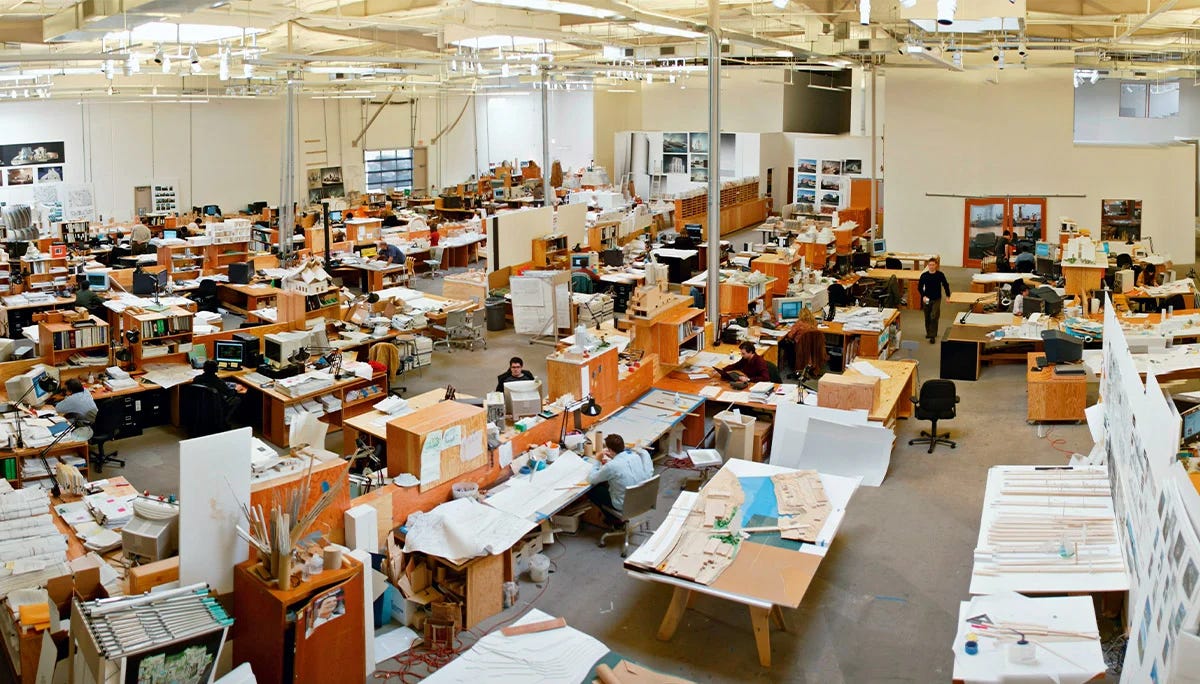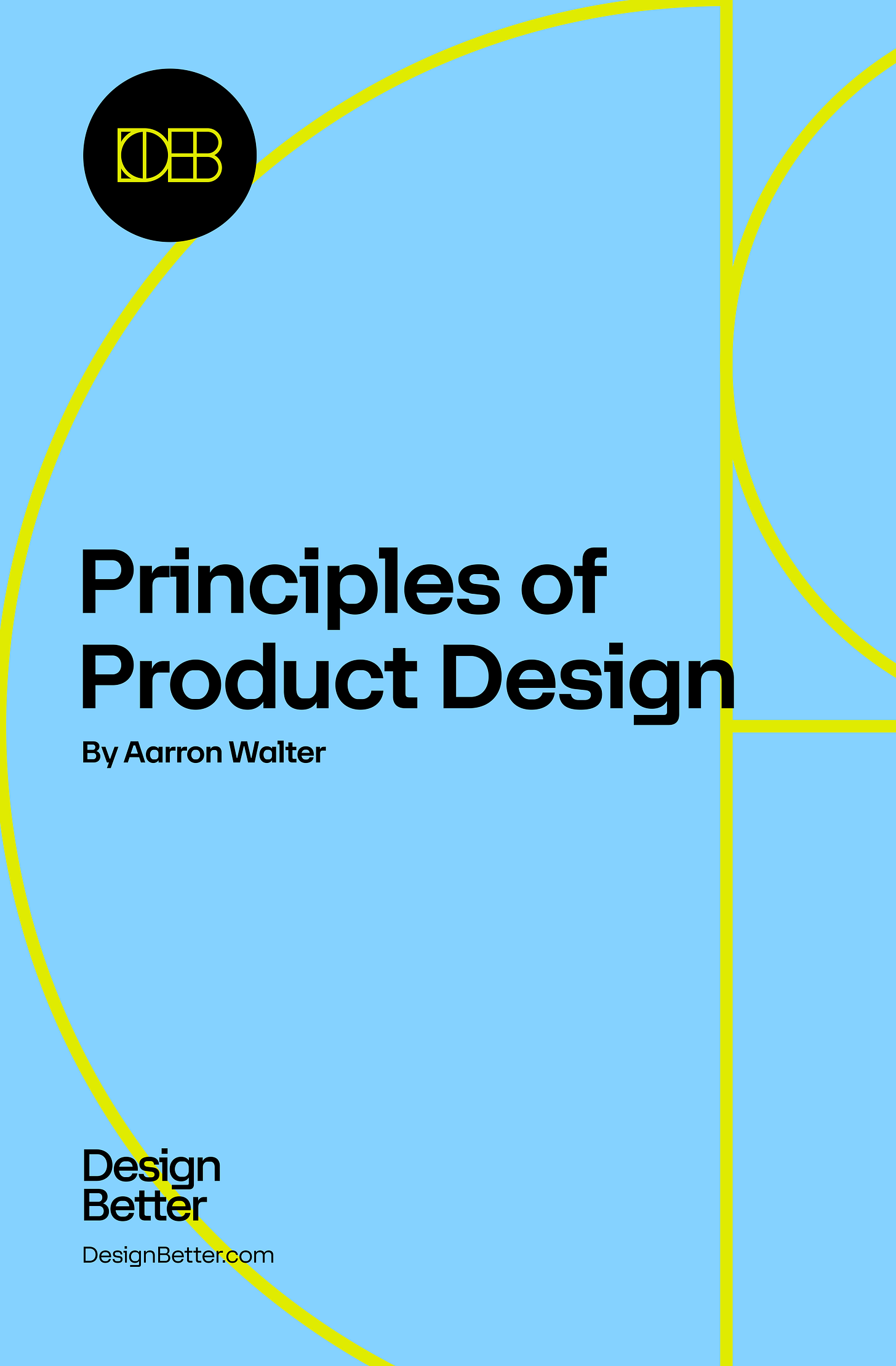Preview our latest book: Principles of Product Design
An excerpt from our ebook Principles of Product Design, the essential book for understanding the best practices of product design.
Chapter 3: Pencils Before Pixels
The work of the modern designer lives in the abstract world of the computer, where every move we make is precise and effortless. Precision has its place, but not in the early stages of the creative process, when our ideas are still nebulous. There’s danger when creative exploration starts with perfection.
Perfection can create the illusion of certainty, something architect Frank Gehry avoids as he begins a project. It’s discovery he craves. Craig Webb, Design Partner at Gehry Partners, has heard Gehry say many times, “If I knew where I was going, I wouldn’t go there.” To Gehry, peak creativity lies in the unknown.
His process begins with rough concepts. He and his team sketch, make models, then reflect. If the outcome isn’t right, they throw it out to begin again. Crude outputs early on make the work less precious and completely malleable.
"I’ve worked out my language through the sketches and through the models."
Frank Gehry — GEHRY PARTNERS
The hundreds of models and sketches that cover the walls and surfaces of Frank Gehry’s studio are the artifacts of a creative process that starts wide, where there’s space for discovery of the best ideas before committing to a single direction.
Figure 1. Frank Gehry’s studio is an explosion of sketches and models, artifacts of a creative process that values discovery.
Though Gehry’s work is unique, his process is not. Many creative thinkers start wide and narrow down. Unfortunately, many software design teams take a different approach—they start narrow and refine too soon.
Steve Jobs once famously likened the computer to a bicycle for the human mind. Computers help us make short work of complicated tasks and connect us to vast amounts of data—superpowers indeed, but when misapplied they can hinder the creative process.
Computers let us jump straight to pixels—a space of precision where everything aligns to a grid, vividly colored and fully formed. Precise outputs are precious and hard to abandon. This narrows creative exploration to just a few ideas well rendered.
To find the best design solutions, we should follow Frank Gehry’s lead: crudely render many ideas to find the solution worthy of a more precise investigation.
We can make more space in our creative process for critical thinking and better design by putting pencils before pixels.
“Sketching is extremely powerful because it is incredible fluid”
Kevin Cheng — INCREDIBLE LABS
The power of a pencil
The pencil is a humble tool that’s sparked millions of great ideas. It’s the inverse of a computer; it’s simple and limited in functionality, but its limitations make it effective.
“I start everything important with pencil and paper.”
Russ Unger — 18F
Pencils are important to the creative process because:
Pencils are inclusive. They’re not just for designers—anyone can use a pencil to express their ideas clearly. The pencil is the great equalizer.
Pencils are low-fi. Quick sketches give no impression of a complete thought, signaling to all that it’s okay to offer feedback.
Pencils aren’t fiddly. Instead of getting lost in software settings or style, you’ll focus on your ideas.
Pencils are fast. You can explore vastly different solutions to the same problem in minutes, and you won’t feel bad throwing your sketches out because you invested so little time.
There’s a magic that happens when we put our ideas on paper. Dave Gray, Founder of XPLANE and co-author of Gamestorming, describes sketching as “a conversation with yourself.” Gabriela Goldschmidt, professor emeritus at Technion Israel Institute of Technology, made similar observations in a study of the sketching practices of architects published in the Creativity Research Journal. She discovered that although sketches start from ideas already within the mind, they can mutate into the unexpected—forming new ideas.
Sketching is a thinking activity!
PRO TIP
Gamestorming together The bestselling book Gamestorming: A Playbook for Innovators, Rulebreakers, and Changemakers by Dave Gray, Sunni Brown, and James Macanufo includes more than 80 games—many of which involve sketching—to help you get your whole team working together to generate new ideas.
Many product designers already know this intuitively. Stanley Wood, Design Director at Spotify, told us, “Many of our designers sketch, but just so they can think through various ideas. Most of the time they don’t show them to anyone.”
And sketching, of course, is also a powerful communication device. The design team at Slack shares sketches with colleagues to invite conversation about concepts without getting distracted by style.
“We all start on paper at Slack and then explore from there. It’s rare that people are so good with a tool that they can think within it. Having squiggly lines on paper keeps you focused on real problems. You can move through ideas much faster, and there’s also something about the fact that a sketch is so clearly not the final product. People don’t get confused by the style and instead focus on the concept.”
Diogenes Brito — SLACK
The Mailchimp design team discovered that sketching is an important bridge to engineering colleagues. Todd Dominey, MailChimp’s Director of Design, noticed that “Pixels freak people out!” When engineers see a high fidelity design comp, they get the impression that the important decisions have been made without them, and now they’re expected to simply execute the design. But when a sketch is presented, it’s clear that the creative process is still wide open for their participation.
Keep reading! Get Principles of Product Design.
Principles of Product Design by Aarron Walter presents the best practices employed by the best designers and teams. This 168 page book features insights from Netflix, Google, Slack, Airbnb, and more.
Available in PDF and epub formats.





